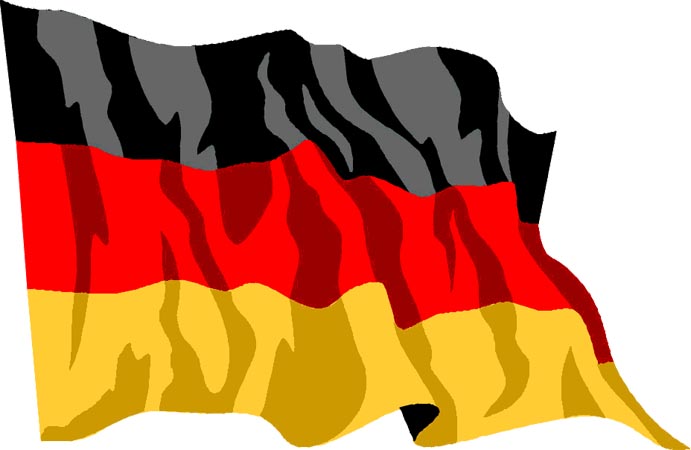Wartime bunkers in Berlin recall Nazi era
 Berlin - A massive concrete air-raid shelter which Russian prisoners were forced to build as slave labourers in Berlin in 1943 is soon to be designated a historic monument as a reminder of the evils of the Nazi era.
Berlin - A massive concrete air-raid shelter which Russian prisoners were forced to build as slave labourers in Berlin in 1943 is soon to be designated a historic monument as a reminder of the evils of the Nazi era.
The above-ground shelter, at the corner of Pallas and Potsdamer streets in the city's densely populated central Schoeneberg district, has for years been a grim World War II relic. It is adjacent to the site of the Palace of Sports, a city venue that was demolished in 1973.
At the Palace of Sports, Nazi Propaganda Minister Joseph Goebbels challenged an audience of Nazi Party faithful in 1943, "Do you want all-out war?" The crowd rose to their feet and roared approval at his every word.
The speech, intended as a morale-booster for the nation, was made following the routing of the German Wehrmacht on the Eastern Front in the winter of 1942 and the expulsion of the Germans from Stalingrad by the Russians.
Built in 1910, the Palace of Sports was used for many political and sporting events between and after the two world wars. German heavyweight boxer Max Schmeling fought there several times.
In the 1950s and 1960s, rock stars like Bill Haley, Jimi Hendrix and Pink Floyd showed up to perform there, but by 1973 its popularity as a concert hall had waned, and it was ordered torn down, leaving the shelter next door in isolation.
Local SPD politicians believe that by preserving the ugly shelter, which is referred to by Germans as a bunker, the horrific nature of war will be underlined for future generations of German citizens.
Demolishing its thick concrete walls would have been costly, claim city officials.
The grim-looking bunker was conceived as a shelter for up to 5,000 Berliners at the height of the 1939-45 conflict. Captive Russians forced to work on the project toiled in primitive conditions, their movements constantly monitored by gun-toting Nazi guards.
One of the city's larger surviving war-time shelters, it has long been regarded as an eyesore by many Berliners.
Overground bunkers, their forbidding walls equipped with narrow slits for windows, are still to be found in the German capital.
The graffiti-smeared bunker today is "framed" within a huge 1970s housing complex incorporating some 400 apartments in Pallas Street.
At the time, the post-war rationale for preserving the structure was that it could serve as a shelter for citizens in the event of a civilian emergency, or a surprise military attack on the city during the Cold War years.
But with the German capital reunited, such fears have long since faded. More recently, city officials have rented the bunker to the city's "Underworlds Association," founded 12 years ago.
Its members busy themselves doing up some of the 300 surviving shelters, both underground and overground. Foreign tourists in Berlin are offered conducted trips around the bunkers.
In 2000, Underworld members inspecting a bunker beneath the city's now defunct Tempelhof Airport found a Nazi document room with files on 4,000 people who had been forced into slave labour under the Third Reich.
By examining old maps, Association researchers also discovered several tunnels and forgotten storage rooms connected to Berlin's subway system. Hundreds more remained undetected, according to Dietmar Arnold, an engineer and urban planner by training, who is the organization's co-founder.
He devotes much of his time to leading the Underworld group's activities and writing books about Berlin's subterranean world.
"We know there are a lot of concealed underground shelters, but we just don't know how many," he said. "We have a lot of work to do."
Berlin's rich maze of shelters is in large part a consequence of the fact that the city had two dictatorships during the last century which both often felt their existence was threatened.
In the city's central Mitte district the Nazis built bunkers beneath, as well as alongside their government buildings, some of which can still be seen today.
Several years ago, Christian Boros, a wealthy German entrepreneur, arrived in Berlin to build an art gallery on several floors of a five-storey former Nazi era bunker in Reinhardtstrasse, near the Friedrichstadt Palast, Europe's largest variety theatre.
More than 400 art works are now displayed there. Atop the shelter Boros resides in a penthouse with a swimming pool and a magnificent view across town.
On the city's posh Kurfuerstendamm boulevard, a bunker once planned to house several thousand people nowadays serves as a history museum, and as an occasional night-time weekend party venue.
The communist East German regime did not build its military bunkers in central Berlin but more to the east, near Strausberg, where the command centre of the National People's Army was located. Extra bunkers were provided for the state and party leadership. (dpa)